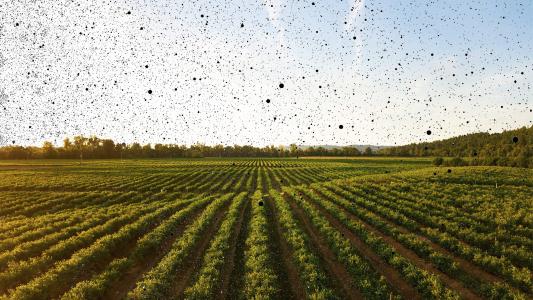Ask any scientist what are the biggest environmental challenges facing our planet, and somewhere on the list, they are bound to mention “plastic pollution” and “climate change.”
They’re big challenges, but we may not have to solve each on its own. Researchers at Honeywell International, a chemicals and aircraft parts manufacturer, are tackling them in tandem, with a new method for converting low-grade plastic waste into oil, which they can turn into high-quality plastic.
The result is an “upcycling” process that takes crummy plastic and makes it better, reducing waste and the need for extracting more oil.
The failed promise of recycling: Plastic isn’t going away anytime soon. The practical benefits of plastic abound. It is lightweight, allowing us to ship more products with less cost and fewer greenhouse gas emissions. It expands the shelflife of many foods. And some properties of plastic, like insulation or flexibility, can’t be matched with other materials.
“We can handle mixed plastic waste (and) make it into high-quality oil.”
Gavin Towler
But, as the waste piles up, our only viable option for slowing down the mounting plastic problem is recycling — even that is limited.
The usual plastic recycling process shortens the polymer chain, lowering the quality of the plastic. Each time it is recycled, the quality degrades — a process called “downcycling.”
Unlike aluminum, which can be endlessly recycled, a single piece of plastic can only be recycled about 2-3 times before the quality is degraded to the point where it is useless. Eventually, all plastic is discarded, at best ending up in landfills or incinerators (or, worse, oceans) — which means recycling alone won’t solve the plastic pollution problem. We need other solutions.
The big solution: Honeywell said in a statement that their proprietary technology “has the potential to increase the amount of global plastic waste that can be recycled to 90 percent.” And, compared to new plastic produced from fossil fuels, their process produces fewer carbon emissions.
The company expects to launch their system, which they call “Upcycle Process Technology,” in 2023.
With this new technology, Honeywell will be able to recycle plastics that would otherwise be discarded, such as colorful, flexible, multilayered packaging and polystyrene (styrofoam).
They found that compared to manufacturing the same quantity of virgin plastic from new oil, the production of their recycled polymers resulted in a 57% reduction in CO2-equivalent (CO2e) emissions. And on the other end, compared to incineration and landfilling (where a lot of junk plastic ends up), upcycling reduces CO2e emissions by 77%.
Honeywell also cites a 2020 study published by AMI International, a global plastics industry analyst firm, which said sophisticated recycling technologies like Honeywell’s might result in 5 to 15 million tons of extra plastic trash being recovered each year by 2030.
The caveats: But, of course, there are caveats to AMI’s optimistic prediction. Certain conditions have to be met — namely, favorable legislation and appropriate sorting infrastructure.
Honeywell is now merging its technology with automated methods to filter through plastic waste and remove undesired elements. Gavin Towler, chief technology officer at the company’s Performance Materials & Technologies unit, told Bloomberg, “We can handle mixed plastic waste (and) make it into high-quality oil.”
“By broadening the types of plastic that can be recycled, UpCycle will revolutionize the plastics economy and play a critical role in improving the sustainability of many of the products we use on a daily basis,” said Vimal Kapur, CEO of Honeywell performance materials and technologies, in the release.
The benefits of this new technology are still too early to tell. We will have to wait to see if it makes a dent in the plastic problem on a large scale. But the effort could be one solution to two growing environmental problems.
We’d love to hear from you! If you have a comment about this article or if you have a tip for a future Freethink story, please email us at [email protected].






